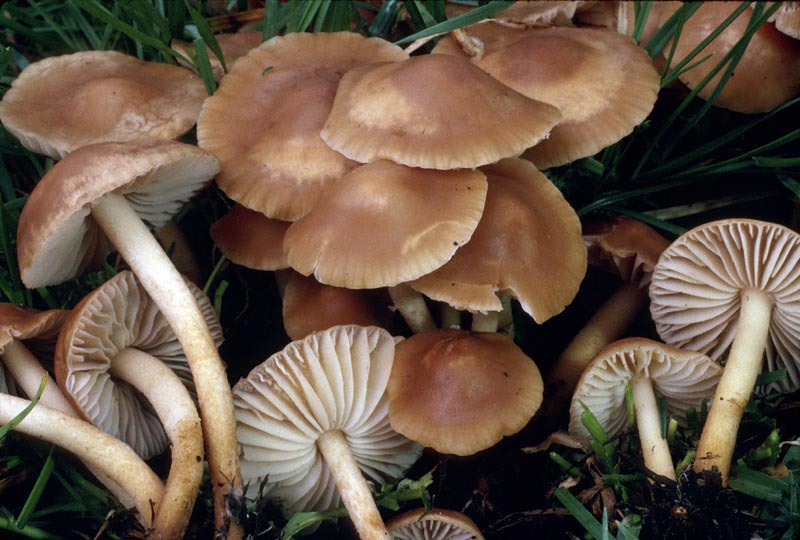
© Steve Trudell
Danny’s DNA Discoveries – Marasmiaceae of the PNW (Marasmiineae)
by Danny Miller
Click here for my Pictorial Key to the Marasmioids, where most Marasmiaceae are found.
|
|
Danny’s DNA Discoveries – Marasmiaceae of the PNW (Marasmiineae)
Click here for my Pictorial Key to the Marasmioids, where most Marasmiaceae are found. |
|
Introduction
Those species currently officially in the Marasmiaceae contain, not surprisingly, mostly species of marasmioid stature. The Omphalotaceae family (which could be considered part of a larger Marasmiaceae family) contains most of the other marasmioid stature mushrooms. Unfortunately, there's not much rhyme nor reason to identifying the vast multitude of miscellaneous white spored mushrooms to family, as many mushrooms in different families and even sub-orders lack distinctive traits, so they have to be learned individually. Marasmiaceae mushrooms may have a tough, cartilaginous stem and quite distant gills. Marasmius itself is especially noteworthy for its ability to dry out and revive again when wet. A protective substance seems to keep the cells from being damaged when the mushroom is desiccated, so when it re-moistens, it can revive back to a healthy state. abundant common uncommon rare - colour codes match my Pictorial Key and are my opinions and probably reflect my bias of living in W WA. Rare species may be locally common in certain places at certain times. |
|
Summary of Interesting Results
Here are some of the newest, most interesting results of the study:
|
 Marasmius - click to expand Marasmius - click to expand
Capable of drying out and reviving, typically with widely spaced gills and tough stems. Note that this describes other genera in other families in this sub-order as well. Species
mentioned: Marasmius albogriseus, cohaerens, limosus, oreades, plicatulus, tremulae,
curreyi. |
 Crinipellis - click to expand Crinipellis - click to expand
Crinipellis have matted hairs on the cap and a tough, thin dark stem. I should note that my ITS only tree shows that Crinipellis may be inside of Marasmius with 78% probability, but I believe other more robust studies may show it does indeed deserve its own genus. I await a more robust multi-gene study. Species mentioned: Crinipellis piceae, scabella, setipes. |